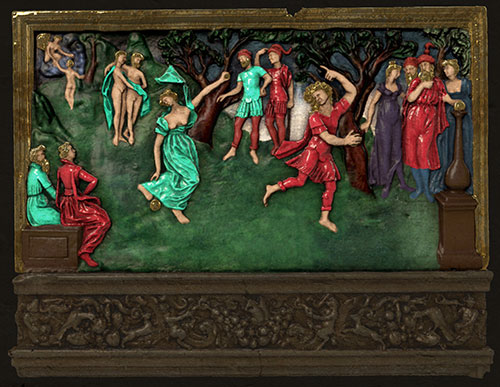This post was originally published on 1 October 2012, but has now been updated with the final results of the project.
This autumn marks the exciting culmination of several years’ work on a multidisciplinary project to uncover the hidden story of a very rare early 17th century stone overmantel. It shows the Classical Greek tale of the Race of Atalanta and Hippomenes. You can find it on display in the Traditions in Sculpture gallery in the National Museum of Scotland.
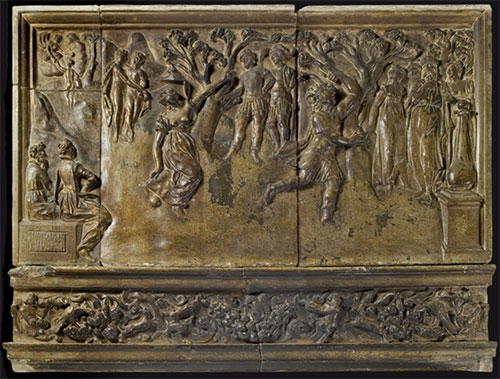
When we first started the conservation of the piece several years ago, we spotted beneath the dirty brown surface a wealth of vibrant colour, including greens, reds, gold and silver.
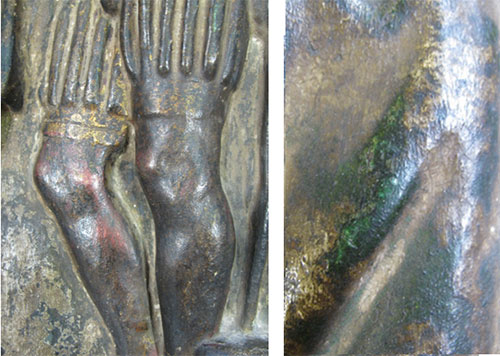
Using traditional techniques of paint analysis and new technologies, we have been able to analyse how the piece might have looked when it was made and throughout the intervening years.
We took tiny paint samples to get an accurate idea of all the layers of colour lying beneath the blackened surface.

Above are pictures of just a few of the paint cross-sections – each about the size of an ant, mounted in resin and polished to be analysed using several techniques, including Scanning Electron Microscope and Fourier Transmission Infra Red.
We found gold and silver leaf glazed with bright washes to give the impression of rich brocades on the clothing; vivid, naturalistic azurite blue skies; copper green grass; pinkish carmine skin tones; and, rather startlingly, gold leaf on the hair and beards.
Colin Muir from Historic Scotland kindly created this laser scan of the piece so that we would have a totally accurate 3D image to work with for our colour recreation.
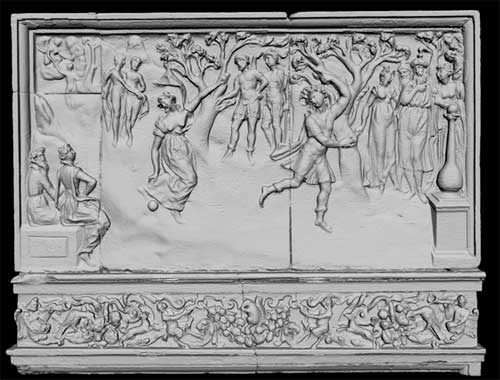
We then approached the School of Computing at Edinburgh Napier University and Leah Ferrini, currently studying for a Digital Media degree, translated our findings so that we could peel back the layers and show digitally what can never again be seen in reality.
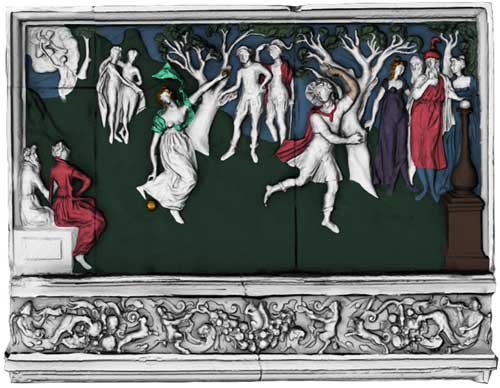
This version shows the colours we are sure are from the first colour scheme, and the areas the samples were taken from.
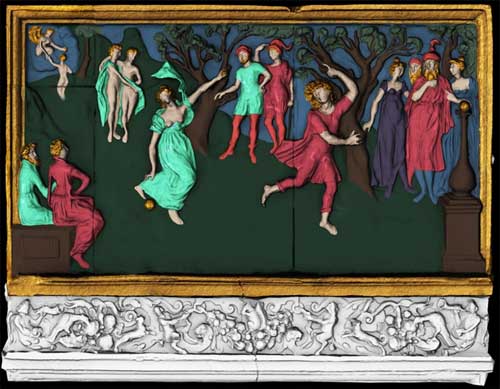
This is our best guess of the original colour scheme, based on the results of the analysis and our knowledge of the artist’s palette. The area left white was also brightly coloured but we decided it was too complex to include in the project so far.
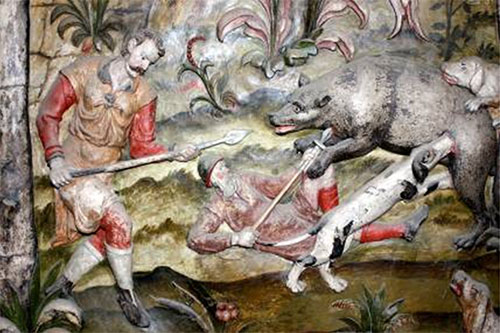
Although we know the general colours are accurate, the image above, from a plaster frieze in the Great Hall of Hardwick Hall, shows the sort of detail we are probably missing, particularly in the grassy areas.
Watch this space for the next blog post about the project, as Napier students are going to continue the work to show the subsequent repaints and improve the accuracy of the digitised colours. We are really looking forward to being able to present this vivid reflection of changing fashions in British interior decoration over the past 500 years and are very grateful to Historic Scotland and Edinburgh Napier University for helping to make this happen.
You can find out more about the history of the overmantel here.
Overmantel update – August 2013
Since the post was published in October 2012, Digital Media students and tutors at Edinburgh Napier University have been hard at work over the past year working improving the colour recreation of the overmantel to give a closer idea of the original surface finish, tones, hues and textures. Joanna Jamrozy, Aleksandra Mysliewiec and their tutor Gregory Leplatre have done a fantastic job and an image of their recreation will be on display in the gallery next to the overmantel for all to see soon.
